Snow Farming
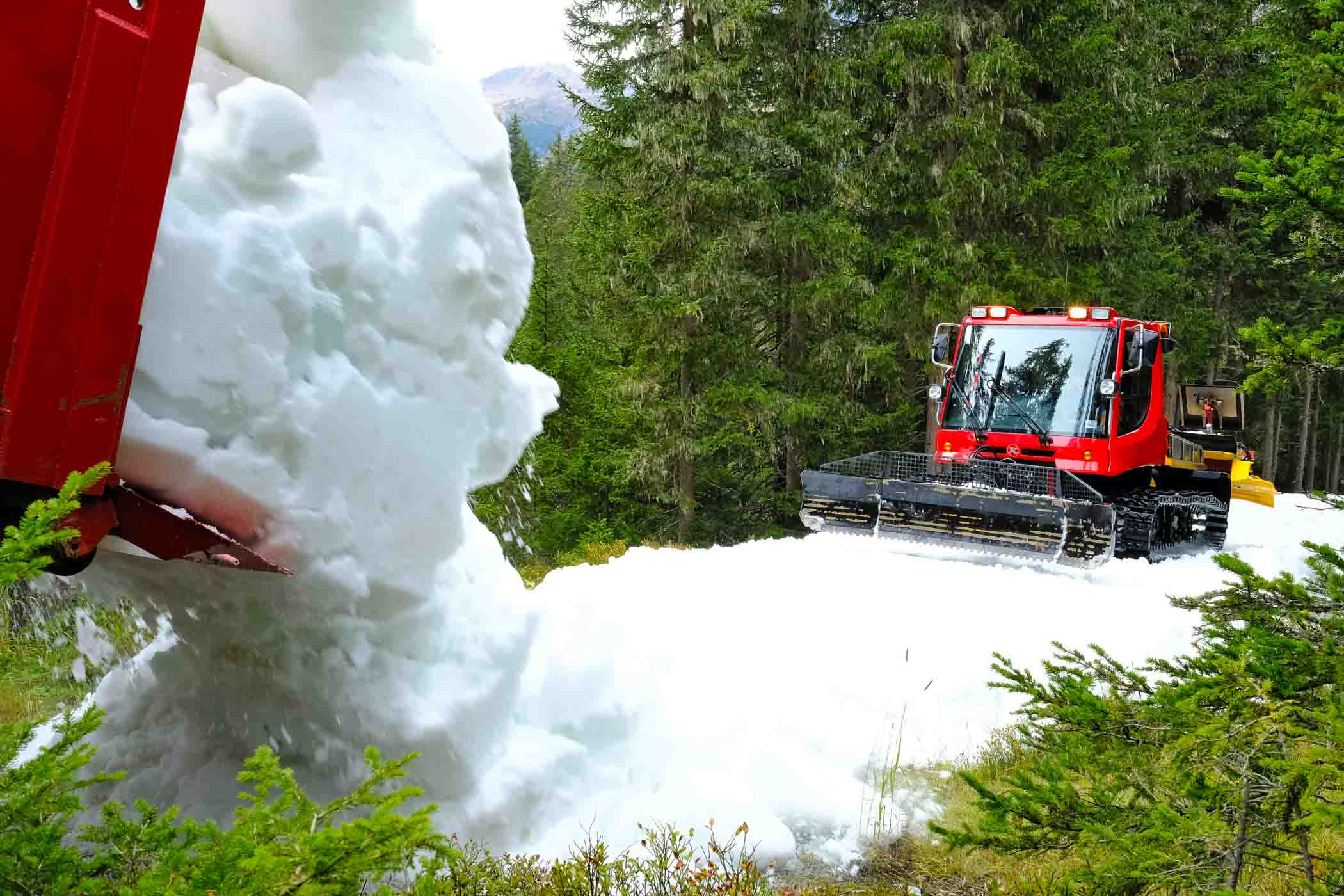

All too recently ski areas have been caught in the act of smuggling snow (at great green expense) to smooth over issues brought about by climate change. Gstaad last winter was seen choppering in 2m³ of snow over 100 times to bridge a gap in a broken piste (which ultimately turned out not to work, with high temperatures and too little coverage; it melted and was deemed ‘ecologically insensitive’). The Lauberhorn races ferried in snow by the load so the 2020 edition could take place.
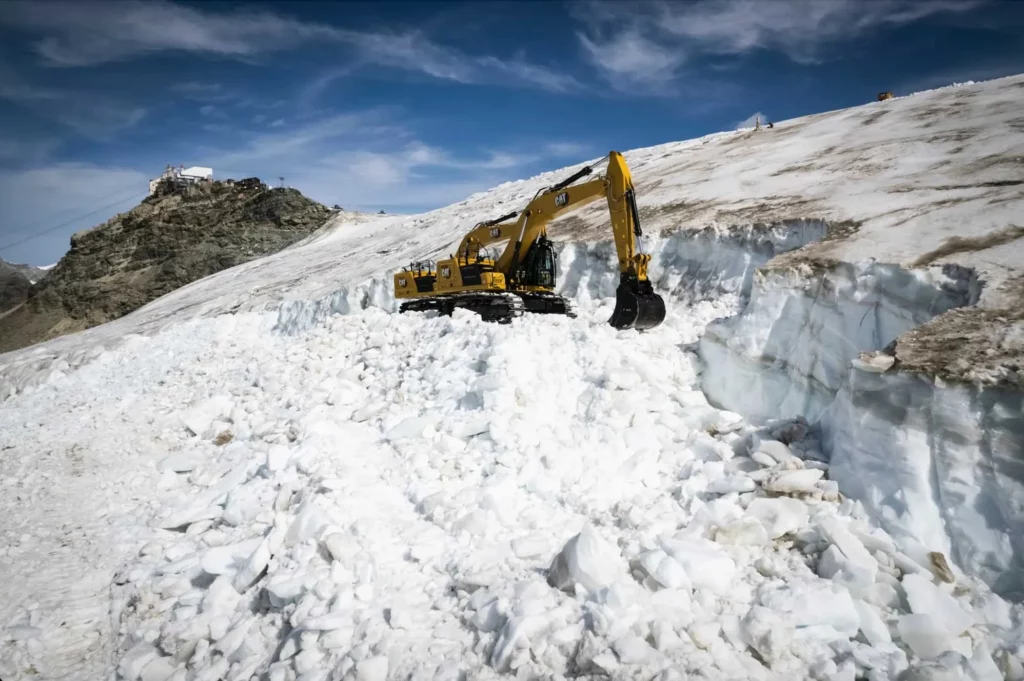
Early during the 2023/24 season, footage of excavators digging deep into Zermatt’s Theodul Glacier (in preparation for the World Cup) went viral, exposing FIS for damaging a glacier that lost 10% of its volume in two years. While the images released were, in fact, ‘fake news’ (in fact picturing Austrian glacier Pitztal in 2019), so arresting is the media, it hardly matters, as we take along hard look at the practices of the snowsports industry.
However, shining a spotlight on the negative makes it easy to overlook those working with Mother Nature, using methods that don’t cost the Earth. To safeguard winters, resorts are returning to traditional practices in ‘snow farming’: storing snow when conditions are right, to recycle when needed.
While artificial snowmaking requires near-freezing temperatures, as well as water reservoirs and energy, farmed snow can be uncovered anytime and spread over the slopes to build a crucial snow base.
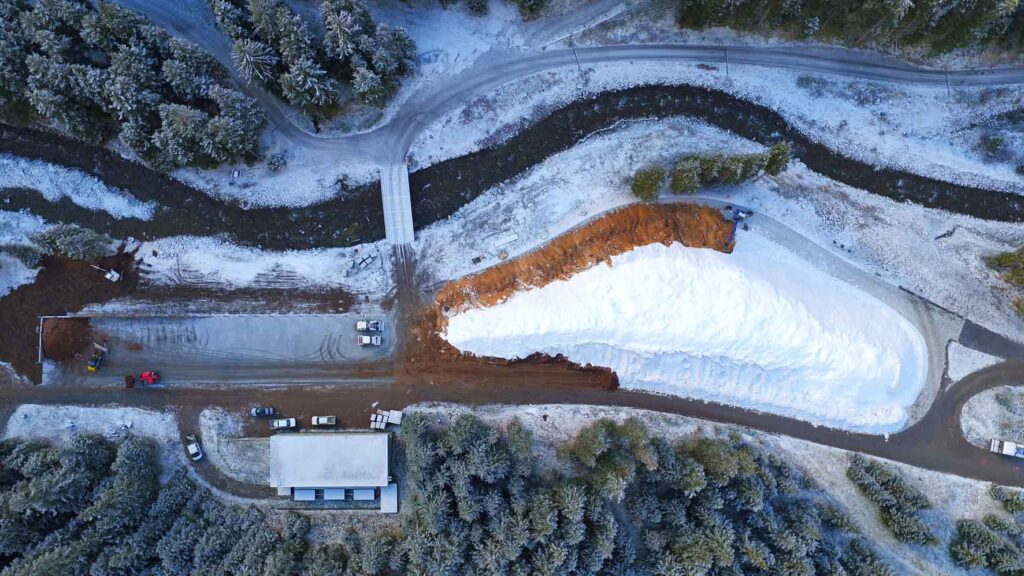
Shock footage aside, Zermatt does in fact ‘groom’ its glacier, filling in crevasses and borrowing snow from wherever it can. High on a plateau at about 3,800m by the Klein Matterhorn station, snow is piled under white reflective matting for just the job. But that’s easy on a glacier where temps (generally) sit at sub zero – it gets more interesting lower down.
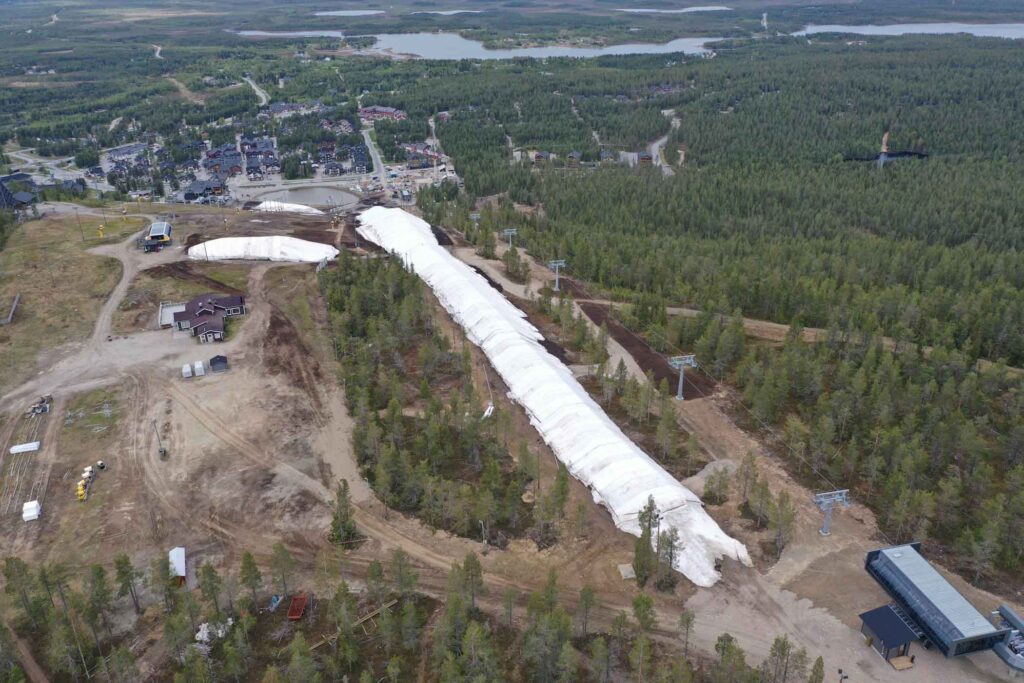
Levi in Finland kicked off its ski operations on 6 October this year with 200,000m³ of recycled snow, piles of which were covered by Finnfoam insulation, retaining up to 95% of stores at just 200m in altitude.
Saas Fee, too, stores snow below the glacier, protected against summer heat and wind. Digging large terraces into the snow (see video below), windblown snow is directed into a depot that’s compacted by snow plough and covered in fleece for insulation, with 50% of deposits lasting the scorching summer of 2023.
Talking of insulation, the most widely used method is blanketing over glaciers to stop the melt. It really works, achieving 50% melt reduction. Keeping out the warmth, and reflecting sun/heat, the white tarpaulin matting essentially mimics snow cover, preventing thaw. Italy’s Presena is one glacier to rug up against the summer heat.
Perhaps the most traditional of all is Davos’ use of sawdust to bank snow, storing snow when conditions are cold and dry, and covering it with 30-40cm of wood chip.
With Nordic skiing huge in the area, a 4km track was made at 1,650m in altitude using 100% recycled snow.
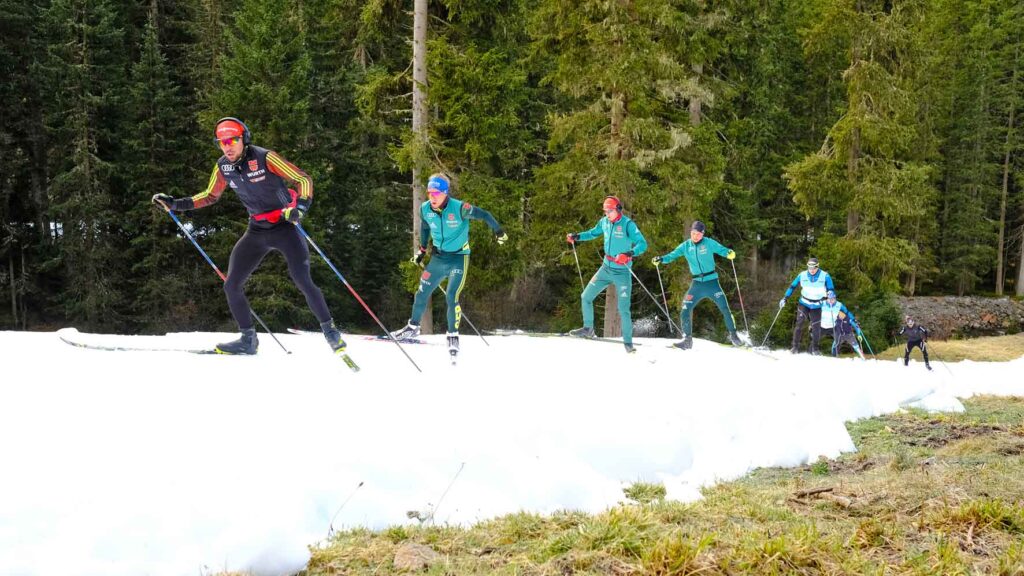
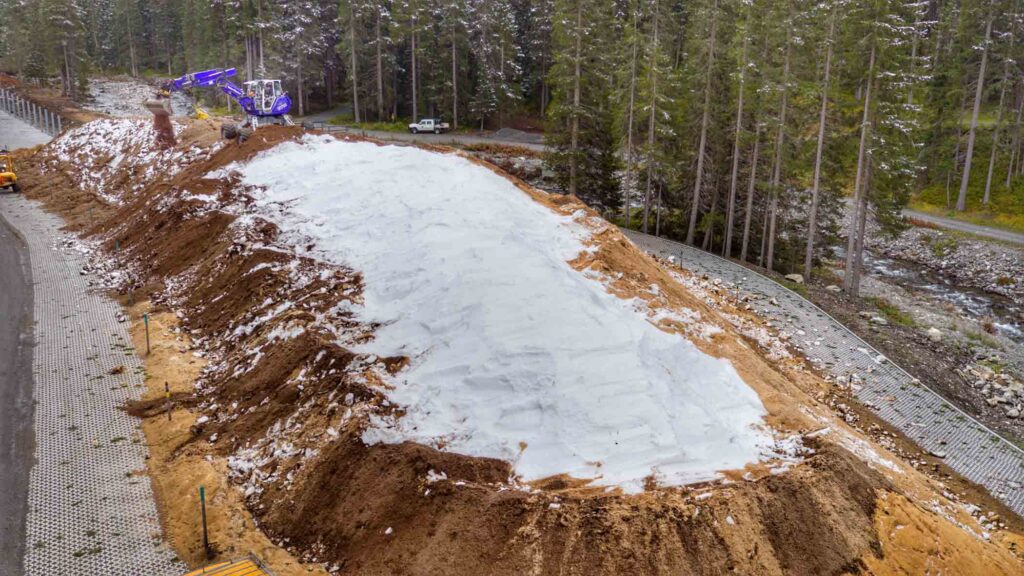
“For us, covering with wood chips is much more effective than using a tarp,” says Andreas Stoffel, head of marketing at Davos. “It’s best because it is a natural product that degrades.”
By name, snow farming means more than storing snow, but cultivating it too. Artificial snowmaking has often been seen as a short-term fix that long-term contributes in a sort of vicious circle. But systems are much improved. Thankfully gone are the days of chemical freezing – which aided man-made snow production, but contaminated local ecosystems – in favour of compressed air technology.
Levi’s snow-cannons are equipped with intelligence to determine which machines should fire up for how long, depending on coverage and snow depth at any point of the mountain.
Meanwhile, resorts use reservoired snowmelt to feed snow guns (hydro powered); When stores are out, snowmaking is done.
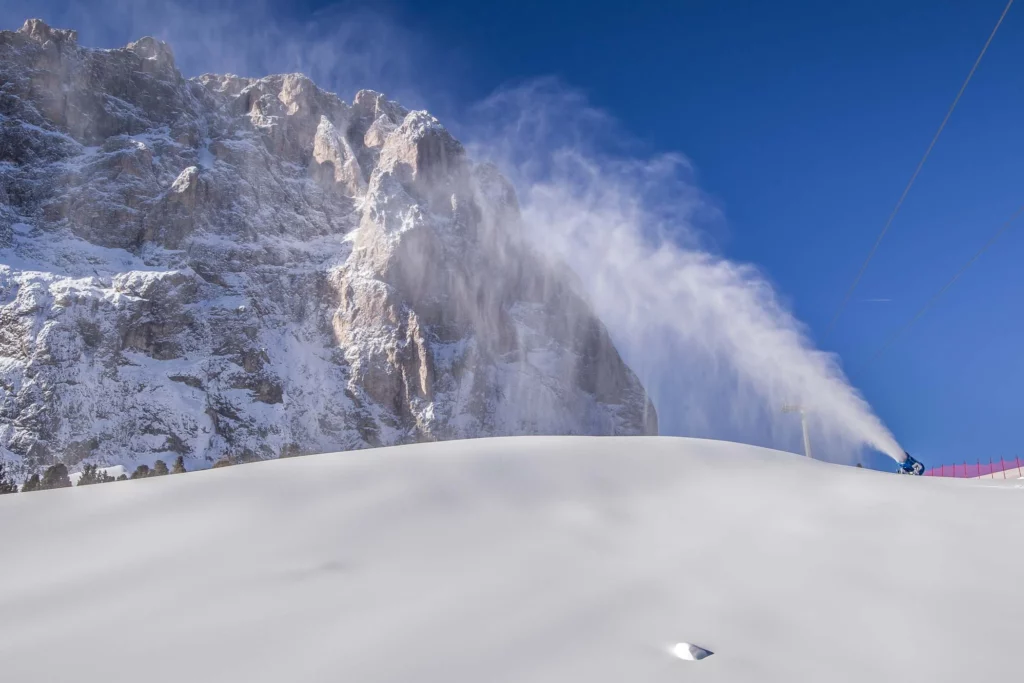
Dolomiti Superski boasts the world’s best snowmaking, with 96% of the area covered by 6,000 snow guns, and non-stop grooming to compact/preserve the 1,200km of snowy slopes.
Compagnie des Alpes (the lift company that runs the Paradiski, 3 Valleys and Espace Killy, among others) runs snowcats – the tractors of snow farms – on 100% biofuel.
The 2023/24 season started strong with cool temperatures and snow coming down thick and fast in the Alps. The harvest reaped from snow farming the previous season was rolled out early doors, allowing for decent bases to withstand the temperature hikes we’ve experienced this winter.
Weatherman Mike Richards from Welove2ski comments: “Some resorts in the Alps haven’t received any significant snowfall in almost six weeks, but thanks to great early season snowfall and sophisticated snow making systems they have been able to offer top to bottom piste skiing despite the drought.”
And here’s to a strong spring and plentiful snow preserves to leverage against next winter.